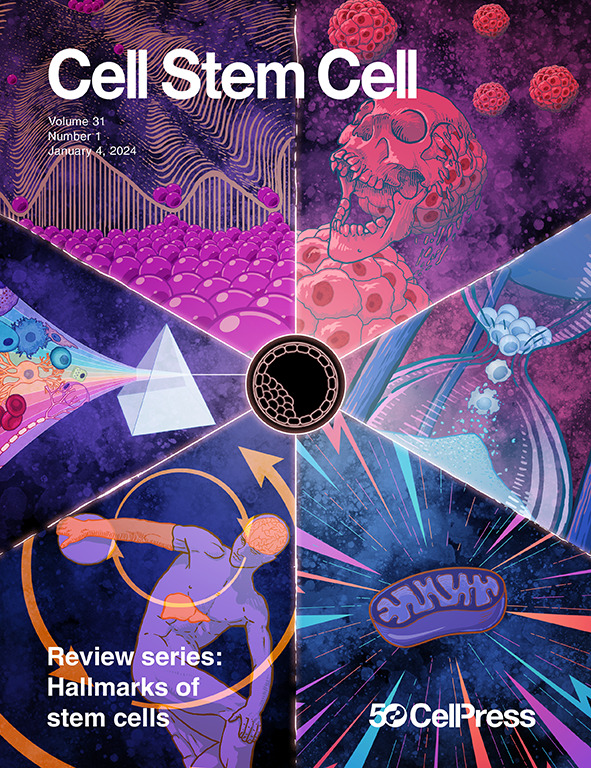自体细胞,在翻译过程中不再丢失
IF 19.8
1区 医学
Q1 CELL & TISSUE ENGINEERING
引用次数: 0
摘要
2020年,一份病例报告描述了ipsc来源的多巴胺(DA)神经元在帕金森病(PD)患者中的自体移植该团队目前正在跟进自体ipsc衍生的DA神经元的临床前安全性和有效性数据,为监管部门批准一项涉及8名患者的1期临床试验奠定基础本文章由计算机程序翻译,如有差异,请以英文原文为准。
Autologous cells, no longer lost in translation
In 2020, a case report described autologous transplantation of iPSC-derived dopamine (DA) neurons in a Parkinson’s disease (PD) patient.1 The team now follows up with the pre-clinical safety and efficacy data of autologous iPSC-derived DA neurons, forming the basis for regulatory approval of a phase 1 clinical trial involving 8 patients.2
求助全文
通过发布文献求助,成功后即可免费获取论文全文。
去求助
来源期刊

Cell stem cell
生物-细胞生物学
CiteScore
37.10
自引率
2.50%
发文量
151
审稿时长
42 days
期刊介绍:
Cell Stem Cell is a comprehensive journal covering the entire spectrum of stem cell biology. It encompasses various topics, including embryonic stem cells, pluripotency, germline stem cells, tissue-specific stem cells, differentiation, epigenetics, genomics, cancer stem cells, stem cell niches, disease models, nuclear transfer technology, bioengineering, drug discovery, in vivo imaging, therapeutic applications, regenerative medicine, clinical insights, research policies, ethical considerations, and technical innovations. The journal welcomes studies from any model system providing insights into stem cell biology, with a focus on human stem cells. It publishes research reports of significant importance, along with review and analysis articles covering diverse aspects of stem cell research.
 求助内容:
求助内容: 应助结果提醒方式:
应助结果提醒方式:


